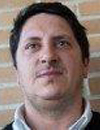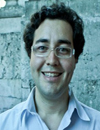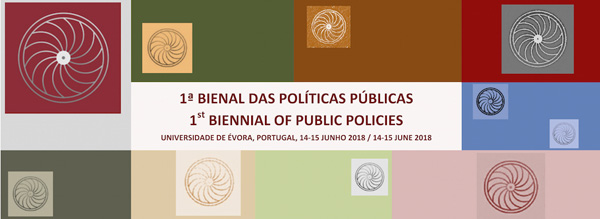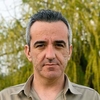- Notícias
- Estudos e Projetos
- Parcerias e Cooperação
- Projeto Monitorização da Recuperação
- Rede Portuguesa de Investigação em Políticas Públicas
- Iniciativas, Conferências e Workshops
- Formação
- Programa de Rádio Alentejo 2020
- Iniciativa Olhar a Política Pública
- Iniciativa Políticas Públicas 2020
- Iniciativa Políticas Públicas 2030
- As Políticas Públicas do Futuro
- Master and Doctoral Consortium
- Bienal das Políticas Públicas
- Fórum de Profissionais das Políticas Públicas
- Memória das Políticas Públicas
- Ciclo de Conferências As Políticas Públicas em Debate
- Ciclo de Conferências Coesão, Desenvolvimento e Equidade Territorial
- Orientação de Estágios Curriculares de Mestrado no Domínio das Políticas Públicas
- Outras Atividades
- Bolsa de Voluntariado para Iniciação à Investigação em Políticas Públicas
- Programa de Rádio Alentejo em Análise
- Prémio Jovens Investigadores em Políticas Públicas
1ª Bienal /1st Biennial of Public Policies
Photographic Exhibition – Cruz da Picada
|
|
Luís Branco is a Portuguese photographer living in Évora, who began his career as a photojournalist at Jornal Público in Lisbon. He also worked as an assistant professor at the Portuguese Institute of Photography, in the discipline of photojournalism. Since 2002, Luís Branco has been working as a freelance photographer, having specialized in Photography of Show and Architecture. One of his passions is Fine Art Photography. He currently collaborates in the area of Photojournalism with Global Imagens, the company responsible for the image of several publications in Portugal. In 2015, Luís Branco began his collaboration with GMT, a company dedicated to the production of documentaries of a cultural and institutional nature. |
|
 |
Rui Diogo Castela (*1974, Angola) born in Luanda, in 1974, moved to Castelo Branco in the following year and there remained until adulthood. Afterwards headed south to the Alentejo. |
|
|
|
Born in 1974 in Luanda, Angola, Telmo Rocha and his family arrive the following year to Portugal, eventually moving to Alentejo, in Évora. It is in this city that he studies, starts in the job market and completes his superior training in Economics. It is also here that he currently lives and carries on his professional activity. However, this apparently linear trajectory never conditioned his need to travel and to know other worlds. In truth, it is this need to interpret the world that launches it in photography, which appears relatively late in life and where preoccupations with the daily life, interactions and culture of peoples, occupy a high place. |
Cruz da Picada
“In the 1970s, the construction of the Cruz da Picada neighborhood included 479 dwellings under the responsibility of the Housing Development Fund to guarantee homes to those who needed them. This housing became a constitutional right and was a means of integration for many people who used to live in untidy spaces, tents, or who returned to the country due to the circumstances of the time. Spaces and perceptions of the city marked by scars whose throbbing evokes imperceptible dilemmas of the past.
This exhibition is a search for existence, condition, neighborhood, for those people and those spaces of life. This exhibition is here. Beside us. In the privacy of home. Under an impression of closeness and empathy, unfamiliar only because it was not previously guessed. Upon looks and instants that speak to us and are thus returned. The work of the three photographers is the result of a process and reflection that brings us closer to Cruz Picada and its inhabitants.
Luís Branco captures moments, instants, he explores the porosity of Cruz da Picada in scenarios of shadows and light. The final result seems bleak and unreal, keeping under constant tension the fragile links between the residue of living moments and memories, between where we have been and who we are.
Rui Castela conveys proximity, he sustains time by examining, in the materiality of the territory, evidence of the memories of those who live(d) it and still remain here. Marginal objects and areas that might lack meaning, or even irrelevance, but which assume a transitive dimension by making a connection between places and experiences.
The photographs of Telmo Rocha are portraits that exist separately from any underlying narrative. Whether in the street or entering a house, we find ourselves in a place of complicity. We all draw our own interpretation of images, regardless of the "true" story behind them. These faces invite the observer for a conversation, one which might not have been possible otherwise, even for those who inhabit the same city.
Each of these photographers took a different approach, a result of what he sought and which was returned to him. In the construction of the exhibition, there was a path to Cruz da Picada, thought to become a trip to a place known, filled with history, felt as near, available, which became a pursuit of identity and sharing with those who live there.”
Nuno Rosmaninho
Exhibition – Public Policy in a Revolutionary Context
 |
Jorge Janeiro is Graduate in History (2005), postgraduate (2007) and Master (2009) in Information Science and Documentation, branch of Archivistics, Faculty of Social Sciences and Humanities of the New University of Lisbon. Holds the Advanced Studies in Public Management by the National Institute of Administration (2009). Master in Public Administration by the University Institute of Lisbon (2011). Director of the District Archives of Évora. |
Explanatory note: Between the Revolution of April 25, 1974 and the approval of the Constitution of 1976, Portugal experienced one of the most agitated periods of its history. On the one hand, state authority was called into question and public institutions had difficulty implementing their policies. On the other hand, the State has substantially expanded its range of public policies, especially at the social level, in order to promote economic and social development, one of the three central axes of the Armed Forces Movement Program.
During the Constituent Assembly, Mr Francisco Oliveira Dias made an application to obtain "information on the activities of municipal services or parishes, commissions of residents or others", specifically on treatment and water supply, sewage networks and waste treatment, waste collection and treatment, as well as planned works and the priority criteria defined for works to be carried out in these areas.
The answers to the application, addressed to all municipalities and parishes and associations of residents of the country, draws a picture of the broad movement to promote works and the provision of services to the population in this period, allowing us to even produce comparisons between entities. The April Revolution of 1974 generated pressure on local authorities to meet basic needs, leading them to speed up the construction of water and sanitation networks and to improve waste collection and treatment systems. At that time these areas of public policy were fundamental in a country heavily backward compared to other European countries, witnessing, during and in the years immediately after the Revolution, significant progress propelled by Local Power and closely followed by central political power.









